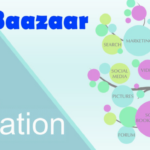Latest Escalation in the Middle East: Israel, Houthi, and Lebanon Developments
The ongoing conflict between Israel and Iran has further intensified, drawing in multiple regional actors. On October 1, 2024, Iran launched 200 missiles at Israel, followed by retaliatory Israeli airstrikes on Hezbollah positions in Lebanon and Houthi-controlled areas in Yemen. The Houthis have linked their attacks on Red Sea shipping lanes to Israel’s actions, leading to significant disruptions in global maritime trade. The destruction of oil storage facilities in Yemen and strikes on Israeli cities have escalated tensions across the region.
1. Iran-Israel Conflict and Retaliation
Iran’s missile attack on Israel, one of the largest in recent times, targeted key cities including Tel Aviv, Jerusalem, and Gedera. In response, Israel launched counterattacks targeting Hezbollah’s strongholds in Lebanon. Hezbollah suffered the loss of several high-ranking leaders, including Hassan Nasrallah. Israeli Prime Minister Benjamin Netanyahu vowed severe retaliation, and Israeli Defense Forces (IDF) pushed ground operations deeper into southern Lebanon. The situation has led to a humanitarian crisis, with thousands displaced within Lebanon as violence continues to escalate.
2. Houthi Escalation and Red Sea Crisis
The Houthis have escalated their involvement by targeting international shipping vessels in the Red Sea in response to Israel’s bombings of Yemen’s Hodeida port. The Red Sea is a vital shipping lane, and Houthi attacks have led to increased shipping costs as vessels are rerouted around the Cape of Good Hope. Israeli airstrikes on Houthi positions in Yemen caused significant damage to oil storage facilities, leading to a temporary halt in fuel imports and a worsening humanitarian situation in Yemen.
3. Global Shipping and Economic Impact
Shipping disruptions in the Red Sea are affecting global trade routes, particularly for oil and food imports. The Houthis’ ability to strike long-range targets like Tel Aviv has raised concerns about the safety of maritime trade across the entire Red Sea and even into the eastern Mediterranean. Shipping costs have risen, and the delays caused by rerouting vessels have increased congestion at major ports in Asia and Europe, leading to a potential global supply chain crisis. The escalating conflict could further impact oil prices and exacerbate inflationary pressures globally.
4. Wider Regional and Global Implications
The Middle East conflict is pulling in global powers like the U.S. and Russia. The U.S. Navy has been actively intercepting missiles and drones targeting Israel, while Russia’s involvement, particularly with its ties to Iran and Syria, raises the specter of a broader regional war. The ongoing conflict threatens to destabilize the already fragile political landscapes of Lebanon, Yemen, and Syria, while also posing significant risks for global energy supplies.
The situation in the Middle East remains volatile, with the potential for broader conflict drawing in more nations and further destabilizing global markets. Diplomatic efforts for ceasefires have stalled, and international actors are struggling to prevent further escalation.
This conflict has wide-reaching consequences, not just for the region but for the global economy, energy security, and political stability. The possibility of further military action by Israel and its allies raises the stakes for the entire international community.














